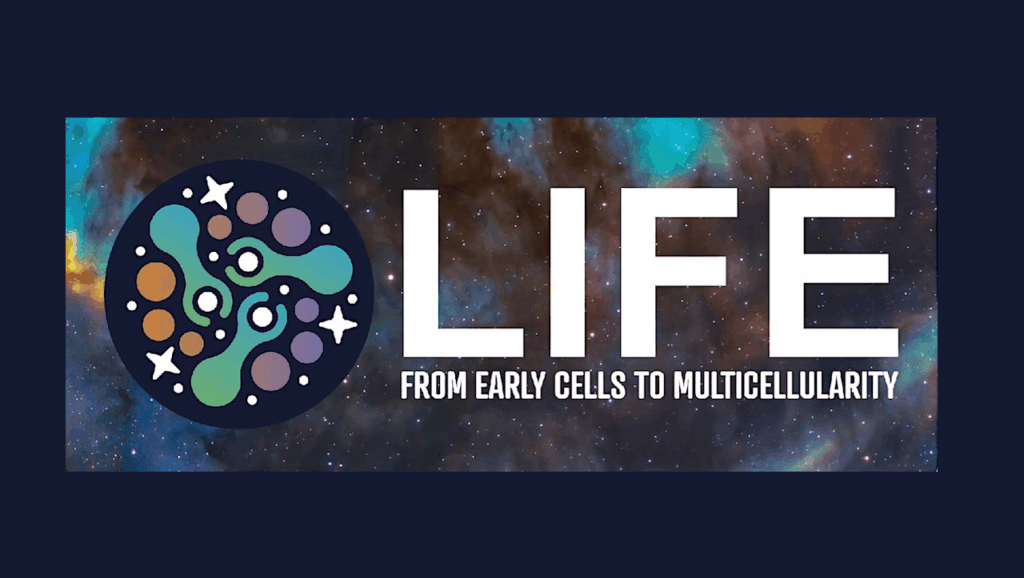NASA Astrobiology Program Call for Applications: NASA-DARES Task Force 2

Opportunity Number: NNH25ZDA002L
Application Deadline: Monday, September 29th, 2025 11:59 PM EDT
Short URL: https://go.nasa.gov/ABStrategyRFI
The NASA Astrobiology Program is seeking approximately 47 individuals to serve on NASA DARES (NASA Decadal Astrobiology Research and Exploration Strategy) Task Force 2 (TF2). TF2 will include 2 Co-Chairs, 9 Focus Area Subcommittee Leads, 27 General Members, and 9 early-career Executive Secretaries (early-career being defined as those currently pursuing graduate degrees or within five years of a terminal degree). NASA Ex-Officio Members will participate for programmatic guidance but will not serve as part of the 47-member team.
TF2 will be responsible for writing, refining, and finalizing the NASA-DARES Strategy, which will be a non-consensus document intended to synthesize the state of the field and highlight outstanding technical gaps and scientific questions.
Building on the nine Focus Areas identified by TF1 and discussed at the NASA-DARES RFI Findings Workshop in May 2025, TF2 will also draw on current community documents that have identified key questions and challenges that have guided research across the past decade (e.g., 2015 NASA Astrobiology Strategy, National Academies of Sciences, Engineering, and Medicine [NASEM] decadal surveys, community consensus reports, workshop reports, etc.). TF2 will also lead community engagement, integrate public feedback, and incorporate NASA review prior to publication, nominally aligned with AbSciCon in May 2026.
The anticipated period of performance is October 2025 – May 2026. Major activities will include:
- A two-day virtual kickoff meeting (October 2025).
- Five public-facing community webinars (October–December 2025).
- Participation in the AGU 2025 Status Workshop (December 2025, hybrid).
- Public comment integration and a virtual Community Roundtable (January 2026).
- Drafting and revising the Strategy, incorporating NASA feedback (February–May 2026).
- Participation in the AbSciCon 2026 NASA-DARES Town Hall (May 2026, hybrid).
Additional internal virtual meetings will occur throughout this period (e.g., subcommittee discussions via Teams or Google Meet).
Co-Chairs will provide overall leadership, ensuring consistency across the Strategy and coordinating with NASA HQ and the internal-to-NASA Astrobiology Federation. Focus Area Subcommittee Leads will manage their subcommittees, coordinate writing efforts, and represent their Focus Area, and topics from the 2015 Astrobiology Strategy, in community engagement activities. General Members will contribute subject-matter expertise to drafting and review. Executive Secretaries (graduate students and postdocs within 5 years of terminal degree) will provide organizational and synthesis support. Additional details regarding each role can be found in the solicitation.
Building upon the nine Focus Areas identified by NASA-DARES Task Force 1 and discussed at
the community RFI Findings Workshop in May 2025, as well as current community documents
(e.g., 2015 NASA Astrobiology Strategy, National Academies of Sciences, Engineering, and
Medicine [NASEM] decadal surveys, community consensus reports, workshop reports, etc.),
TF2 will organize its work across the following Focus Areas:
- Focus Area 1: Protometabolism and Synthesis/Function of Macromolecules in Planetary
Environments - Focus Area 2: Abiotic Organic Production and Chemical Evolution within Planetary
Environments - Focus Area 3: Co-Evolution of Biospheres, Worlds, and Planetary Systems
- Focus Area 4: Comparative Planetology to Understand Habitability
- Focus Area 5: Detecting Signs of Living Environments and Living Worlds
- Focus Area 6: Astrobiology-Focused Mission Approaches and Technology Development
- Focus Area 7: Investment in Astrobiology Physical and Digital Architecture
- Focus Area 8: Workforce and Early Career Support
- Focus Area 9: Astrobiology in Society
Application Instructions
All applications to NASA-DARES TF2 must be submitted in electronic format via the NASA Solicitation and Proposal Integrated Review and Evaluation System (NSPIRES). Interested individuals should refer to “How to Volunteer for Task Force 2 (.pdf)” listed under “Other Documents” at: https://go.nasa.gov/ABStrategyRFI. Applications must be submitted no later than Monday, September 29th, 2025 at 11:59 PM Eastern Daylight Time.
The application should include the following information:
A 2-page biographical sketch that includes the respondent’s relevant professional experiences, positions, and a bibliography of publications.
A 2-page cover letter indicating interest in and qualifications for serving on NASA-DARES Task Force 2, including relevant scientific, technical, and management experience as it relates to the nine Focus Areas or similar strategic planning activities. The cover letter may also describe prior contributions to NASA, the National Academies of Sciences, Engineering, and Medicine, or other community-based strategic planning efforts. Applicants who are willing to serve as a Co-Chair or Focus Area Lead should clearly state their interest and provide a rationale for why they are well suited for the role, referencing specific expertise, leadership skills, and relevant experience.
Completion of Program Specific Questions outlined in Appendix A.
On behalf of selected eligible participants, a support contract, the NASA Research and Education Support Services (NRESS), will work directly with TF2 regarding available support for travel and honorarium. The level of travel and honorarium will conform to the terms of the NRESS contract with NASA.
Self-nominations (or applications or Notice of Intent, NOI, responses) are open to most U.S.-based and some non-U.S. based individuals. A U.S. visa does not guarantee that a person may participate. Civil servants are eligible to apply; however, NRESS cannot pay for civil servant travel, etc. Please refer to “Section 4. Eligibility” of “How to Volunteer for DARES Task Force 2 (.pdf)” for additional information.
Please email questions concerning this review to [email protected] to reach the organizers, Drs. Rachel L. Harris, David Grinspoon, and Becky McCauley Rench. This email address is not to be used for the submissions of applications to NASA-DARES Task Force 2. Any applications submitted to this email address will not be considered.
WARNING: Any submissions or emails with attachments sent to that address will not be considered and will be deleted for security reasons.
Astrobiology,








